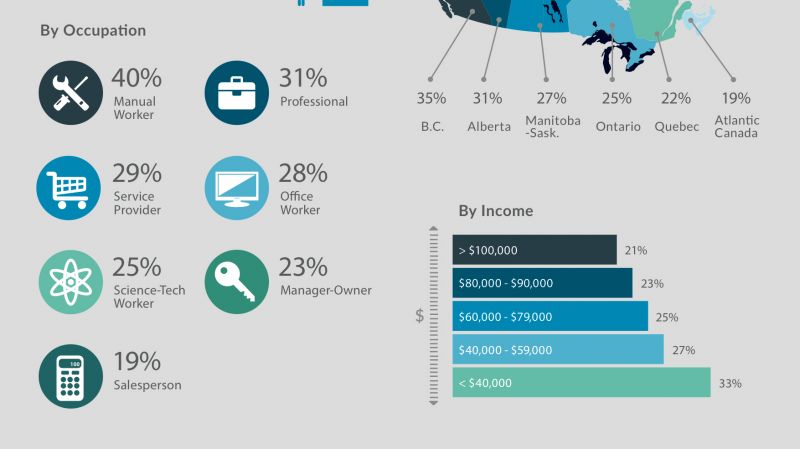Bullies Beware
A growing number of Canadians now report witnessing workplace harassment from both genders

The percentage of Canadians who have witnessed or experienced harassment in the workplace has noticeably declined in the last two years, according to a recent Leger Marketing poll commissioned by Queen’s School of Business.
According to the 2014 study, which mirrors a similar poll in 2012, 23 percent of Canadians say they have personally experienced workplace harassment in their own life, down from 28 percent in 2012. Similarly, the percentage of Canadians who say they have witnessed workplace harassment has dropped to 25 percent, down from 33 percent in 2012. Four percent of Canadians report that they are currently experiencing workplace harassment, or have in the last year, which is virtually unchanged from 2012.
The study also reveals that while more men say they have witnessed workplace harassment than women (30 percent versus 20 percent), the opposite is the case when it comes to personally experiencing it in their own work life. Roughly one in three females (31 percent) has or is currently experiencing workplace harassment versus 22 percent of males.
“It’s encouraging that incidents of workplace harassment appear to be declining,” says Jana Raver, associate professor at Queen’s School of Business. “It suggests that recent legislation and increased education against workplace harassment in Canada is helping. However, the fact that roughly one out of four people still admit to experiencing it personally is hardly cause for a celebration. Society has made great strides in virtually eliminating many traditional job-related risks, and now we must apply the same commitment to eradicating workplace harassment, which is often less obvious.”
Other survey results include:
- Among the various categories of educational background, university-educated employees are the most likely to report that they have experienced or are currently experiencing workplace harassment (29 percent), compared to those who have a high school education or less (23 percent).
- The percentage of Canadians reporting a male harasser has declined from 50 percent in 2012 to 42 percent in 2014, while the percentage of Canadians reporting female harassers has remained the same at 23 percent.
- The percentage of Canadians who say they have witnessed workplace harassment inflicted by both males and females has jumped to 35 percent from 27 percent two years ago.
While harassment can take many forms, the Occupational Health and Safety Act in Ontario defines it as “engaging in a course of vexatious comment or conduct against a worker in a workplace that is known or ought reasonably to be known to be unwelcome.” It may include bullying, intimidating or offensive communications, isolation, hostile non-verbal displays, or sharing offensive pictures or materials.





